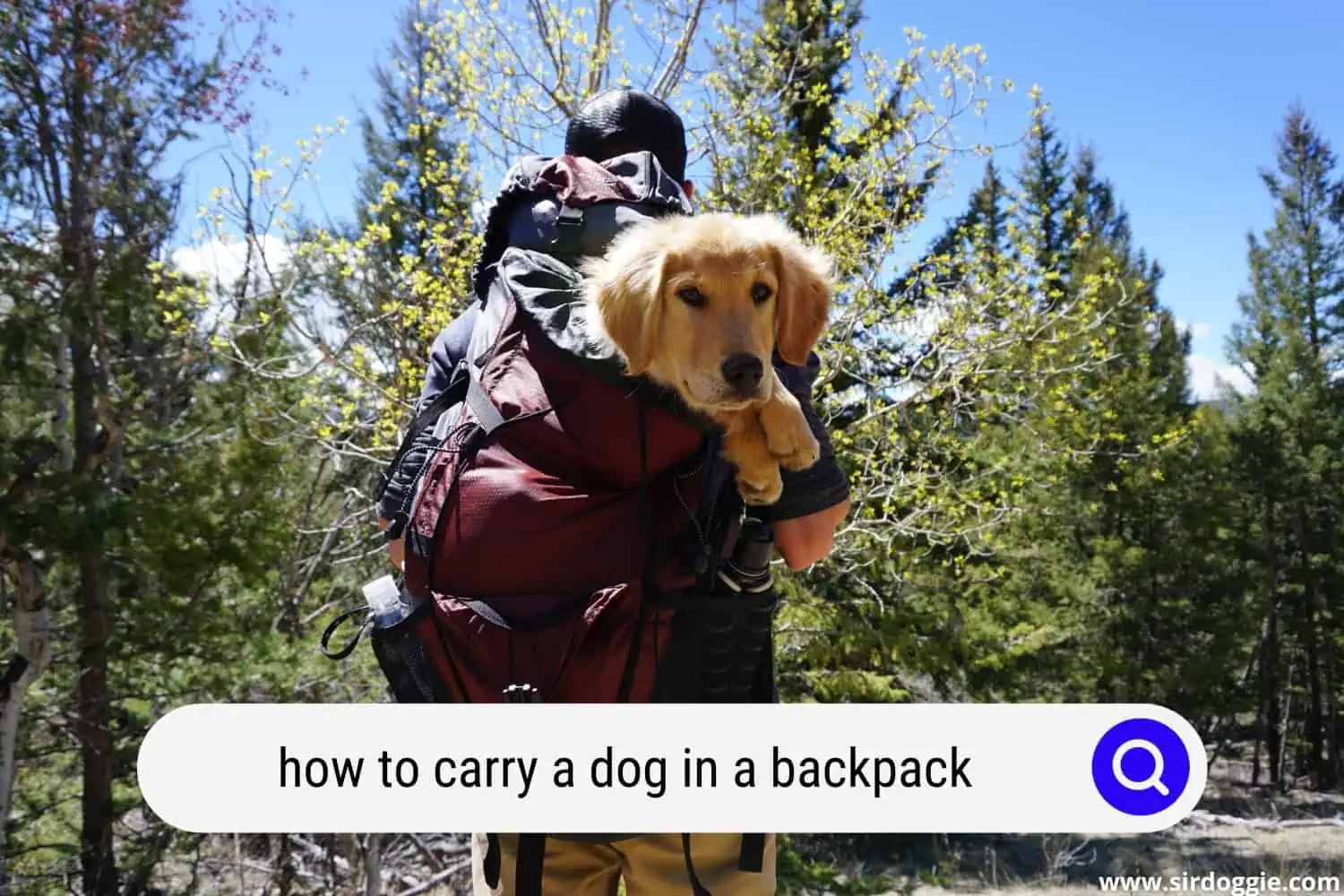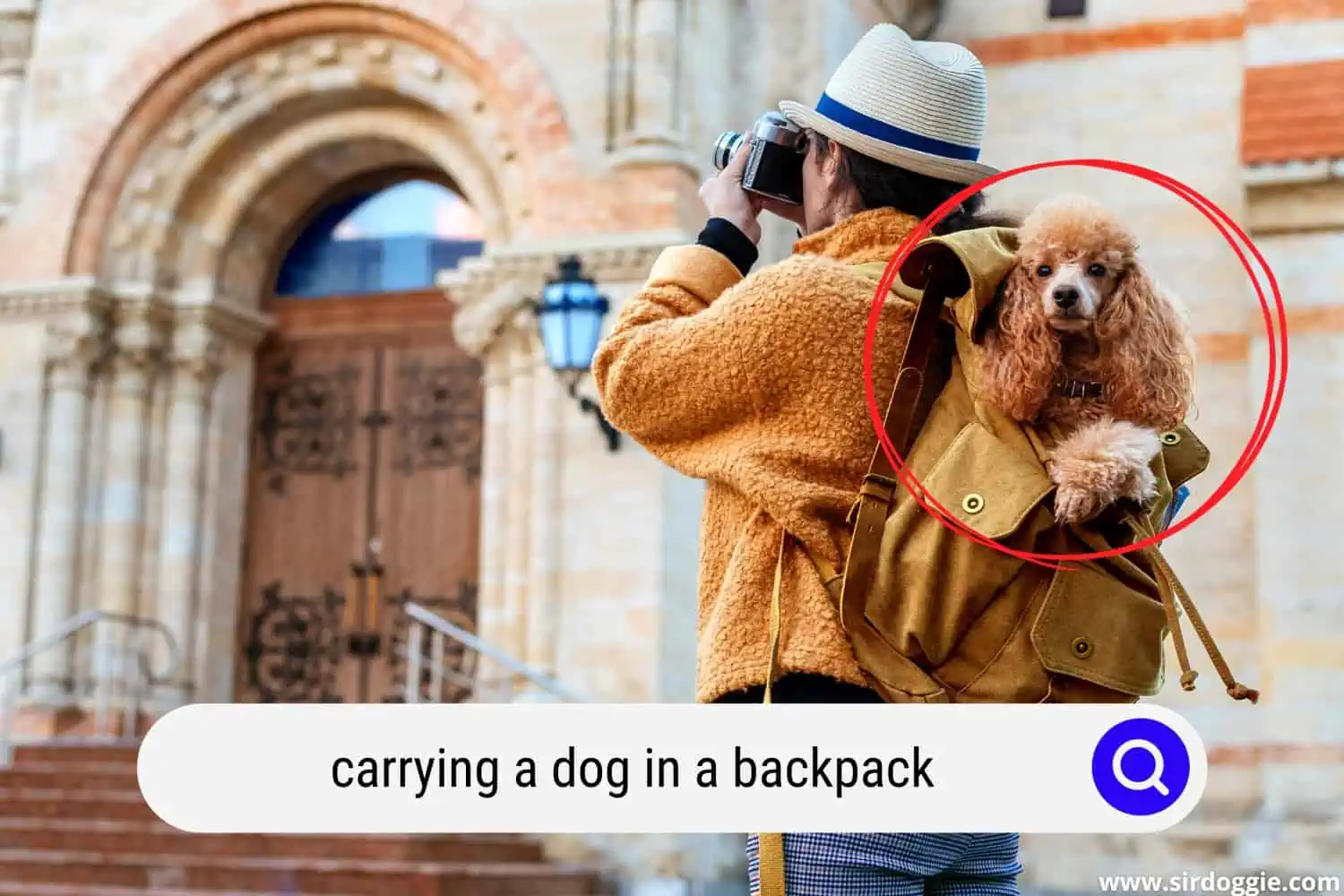How to Carry a Dog in a Backpack: Canine Clues
Most of us have seen it at least once: a person walking around a store or park with a small dog’s head poking out of an over-the-shoulder carrying contraption. Backpacks to carry small- or even medium-sized dogs are commonly produced today and come in a great variety of styles, and more places now allow accompaniment by behaved dogs.

But not every dog carrier comes with instructions. As in, how to carry a dog in a backpack? The answer is, that it depends on the size of the dog, the style of the backpack, and the type of movement, e.g. whether you plan to walk, jog, hike, or climb.
One thing we know for certain is this: do not use the typical backpacks designed for school or hiking to carry a pet around. They are not designed to carry animals, and as such pose dangers to your dog or cat for pet-carrying purposes.
Here are some simple tips to become well-attuned to carrying your canine in a backpack in almost all environments.
Can You Use a Backpack to Carry a Dog While Walking Around?
Yes, of course you can. First and foremost, think about whether you should carry a dog in a backpack.
That decision should be based on the animal’s weight, and temperament. Not all dogs will be keen on being cooped up in a sack tied to their master, and some can get a bit squirrelly. If you can get them tied in at all.
Plus, for this question, it’s just like whether or not to carry a human child around. If the dog is too heavy, it’s probably not a great idea to try to use a backpack. That’s just not good for you.
Carrying significant weight walking around is not good for the back and joints, and remember, this package can move and wiggle, making it even harder.
You can carry most small- and even medium-sized dogs in backpacks. You just should be aware of things to avoid, and best practices in terms of keeping both you and your pet happy.
Dog Comfort is Most Important for Backpack Carrying
To start, make sure your dog will be most comfortable. Being carried up above the ground with limited ability to move (especially run away if desired) is a big change for dogs. Before even trying to train them to get into a backpack, and stay there, make sure your carrying item is proper.
There are a great, great number of pet carrier backpacks on the market, and many of the better ones have dog comfort design elements like extra padding in the right places. Some even entirely enclose pets, like carrying small cages on your back.
Here are some tips on choosing the right pet carrier backpack for you:
Which Way Will the Dog Face?
Pet carriers aren’t like backpacks designed to carry school books, food, clothes, etc. They are manufactured to provide options for buyers, based on their preferences. Mostly they focus on how precisely the pet will be carried. Here are examples:
Front-Facing Dog Backpacks
These backpacks (see Amazon) hold the dog tight to your chest, with the dog facing forward just like you. Many owners prefer front-facing pet carriers because they keep your face close to the pet’s face, maintaining intimacy and making it easier to communicate.
Front-Facing Satchel-Style Pet Carriers
A lot of dog owners prefer a satchel-style dog carrier, which can be slung over one shoulder while the canine rests lower on your body, like in a sling off the hip.
Dog on Back, Facing Backward
If you want to carry a dog on your back, you have to choose whether they will face forward along with you, or straight backward. If they are to face backward, think about what might be behind you at all times. Remember, they will be able to see things you cannot, so you lose a bit of control.
Dog on Back, Looking Forward
This is how you see babies carried on the backs of parents. This might be preferable for very young pooches because it limits what they can see up ahead (they can’t see around your shoulders unless they are bigger with a long neck). When anxious they can rest their head on your back for comfort.
Help Getting a Dog into a Backpack
With the type of pet carrier decided, then start thinking about how to train your pet to get into the harness. Remember that even before starting this research, you were supposed to consider your dog’s temperament, so it might not be advisable to try hyper or otherwise troublesome dogs in a carrying sack.
That said, you can train your dog to get into and stay calmly, in a backpack just like you would get your pet used to riding in a car, or other situations that might make it feel uncomfortably restrained. Here are some simple tips to get started:
- Begin by putting the open backpack on the ground, and offer rewards as the pooch smells it or otherwise explores it.
- Be prepared to provide a reward or treat when you first try fitting the dog into the backpack.
- Once secured inside, lift and carry the enclosed dog for a bit while walking around, at waist level, to get it used to the bumpiness; they should be acclimated a bit before slinging the backpack over your shoulders. (Remember, just being high off the ground can be intimidating).
- Once the backpack is fully over the shoulder, try walking around the house or backyard with your pet first, again for acclimation. It’s probably not wise to first put your pet in a backpack out at a campsite.
- At the end of at-home training sessions, remove the backpack from your back and set it on the ground with the dog still strapped in. Gauge his or her reaction to the experience.
- Adjust accordingly. Eventually, you will know whether or not it will work (as stated above, not all dogs are keen on backpack carrying). You can taper off the use of rewards/treats as the training moves along.

Final Thoughts on Carrying Dogs in Backpacks
Dog carriers are fun for both the pet and master, and can help with pooches that love going with you outdoors but either cannot maintain your pace or tend to wander too much. Today there are a great number of dog backpacks available to make this a reality.
It’s not difficult to carry a pooch in a hands-free dog carrier backpack, and it can be wonderful for aging or injured canines. Just understand some of the nuances noted above, make sure the dog is not too heavy, and get a pet carrier that will be as comfortable as possible for your canine.

Family Dog Expert Author
Hi there! I’m Stuart, a devoted dog lover and family dog expert with over a decade of experience working with our furry companions. My passion for dogs drives me to share my knowledge and expertise, helping families build strong, loving bonds with their four-legged friends. When I’m not writing for SirDoggie, you’ll find me hiking, playing with my beautiful dog, or studying music.